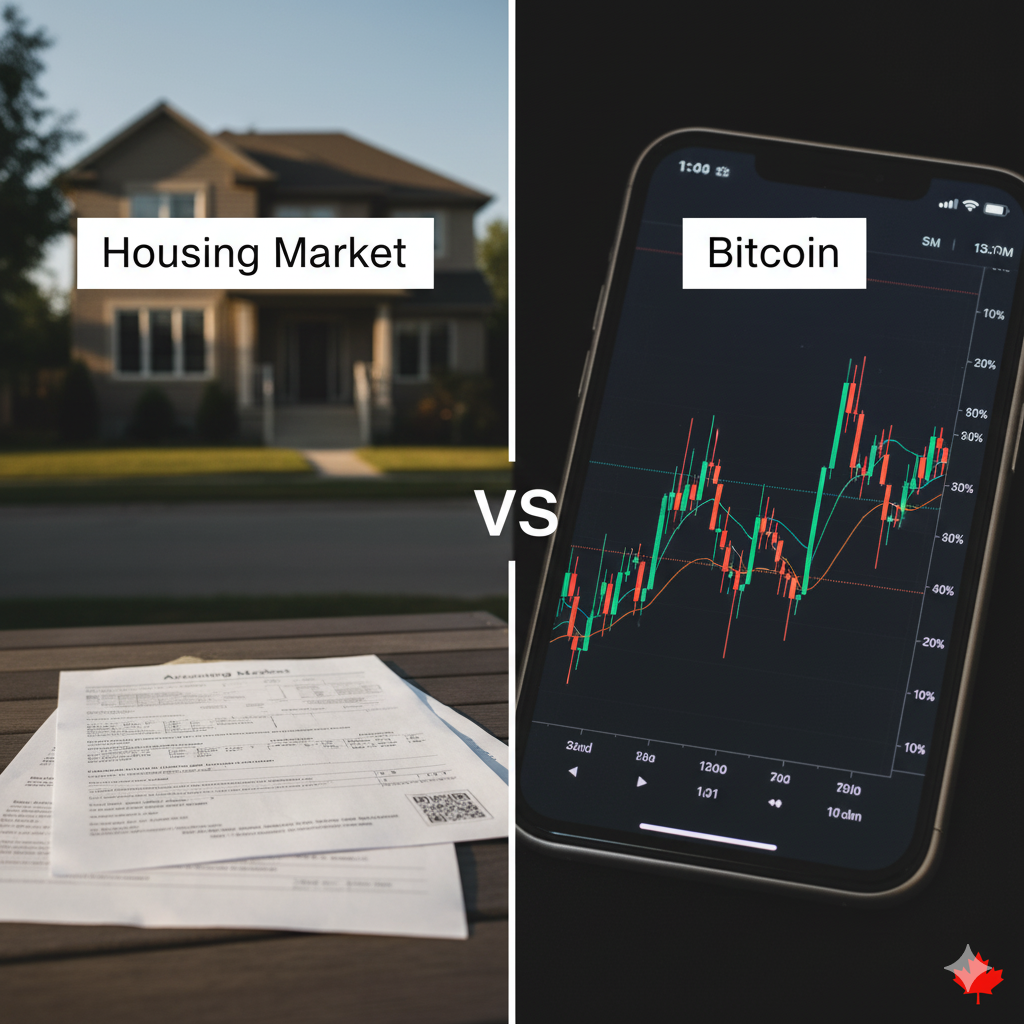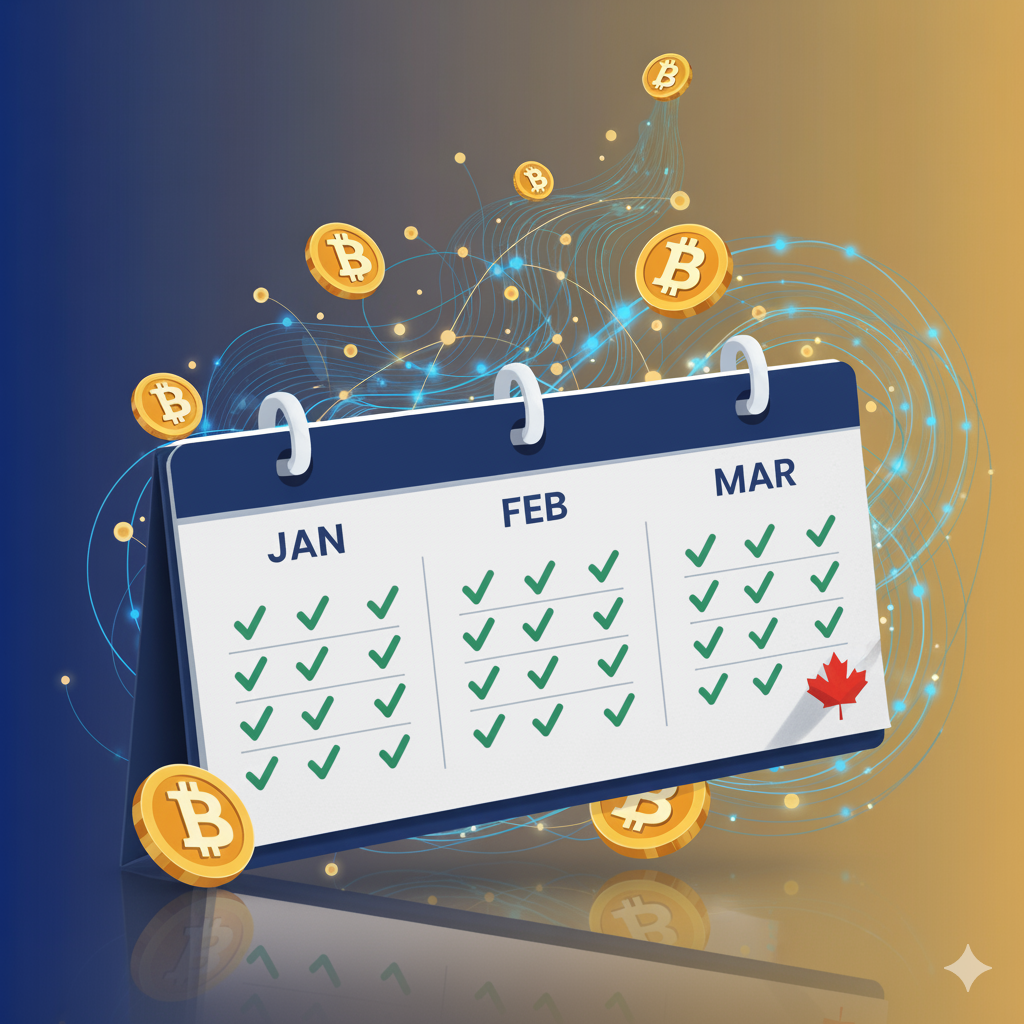A 10-Year Wealth Comparison — Backtested Data and Future Projections
For decades, buying a home was Canada’s default wealth plan. From 2015 to 2025, Canadians who paired real estate with a modest Bitcoin allocation saw a different curve. Here’s a concise backtest and a practical outlook for the next five years.
Backtest first. Investor A tracks the national home-price trend and includes costs: closing and legal fees, insurance, maintenance, property taxes, and higher borrowing rates. Investor B buys and holds Bitcoin in self-custody and accepts rallies and drawdowns. Bitcoin is volatile yet asymmetric, where a few strong years can outweigh several weak ones.
Most Canadians don’t invest in one lump sum. Dollar-cost averaging smooths the ride for both assets. In housing, it means building equity in a single, illiquid property tied to local rates and policy. In Bitcoin, it means collecting more units when prices are lower and fewer when they’re frothy.
Risk is different. Real estate concentrates exposure in one address and one city’s economy, plus ongoing cash outlays that chip away at return. Bitcoin concentrates in price swings but avoids carrying costs and offers global, 24/7 liquidity with a fixed supply.
Looking to 2025–2030, a realistic housing view assumes constrained affordability and rate sensitivity that keep nationwide gains near inflation. Bitcoin’s path won’t be straight—expect a sharp drawdown—but broader institutional access, halving-driven issuance, and growing self-custody literacy support another cycle.
What should a Canadian do? Keep the home you love if it fits your life, but don’t bet your future on a single line. Blend stability with upside. Consider a measured Bitcoin allocation you can hold through cycles, automate contributions you won’t miss, and learn secure storage before you size up.
At 1Bitcoin.ca, we help Canadians buy, sell, and self-custody Bitcoin safely. Grab our free Bitcoin Starter Guide or message “BTC Starter” on Instagram.
Disclaimer: Investing involves risk. Past performance does not guarantee future results.




